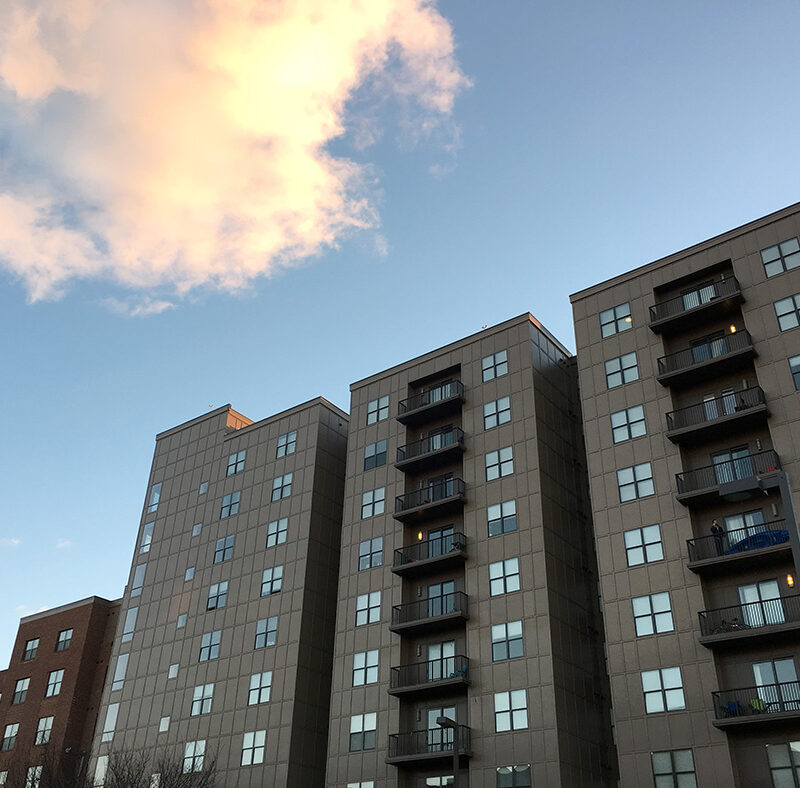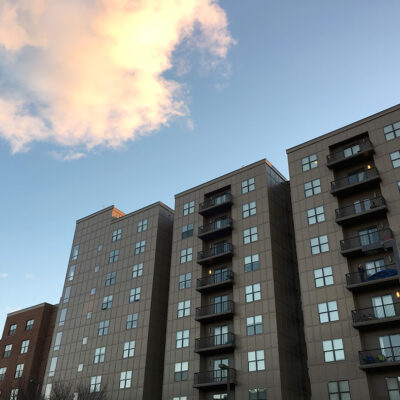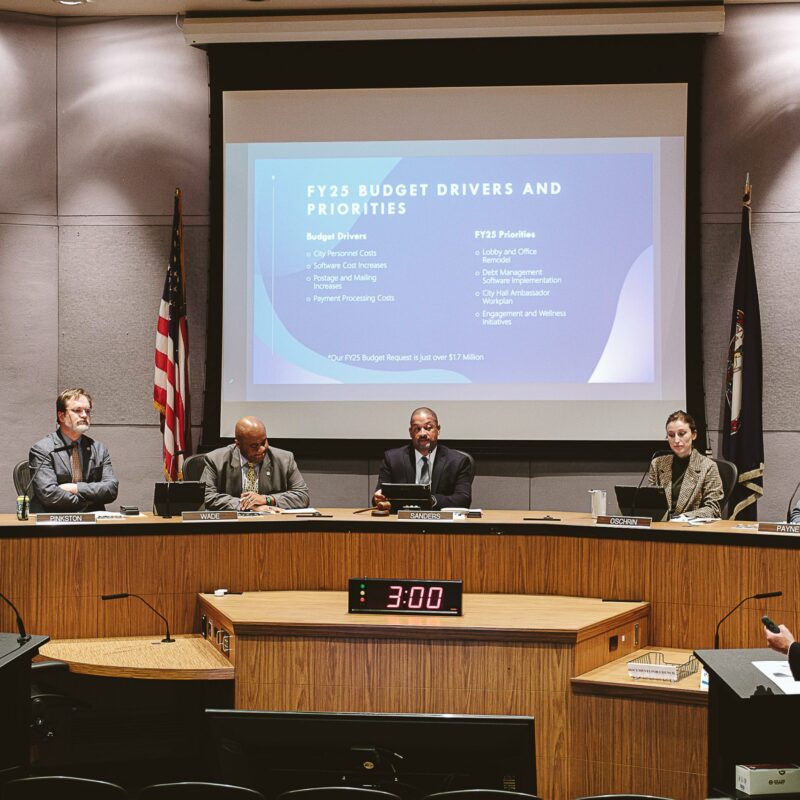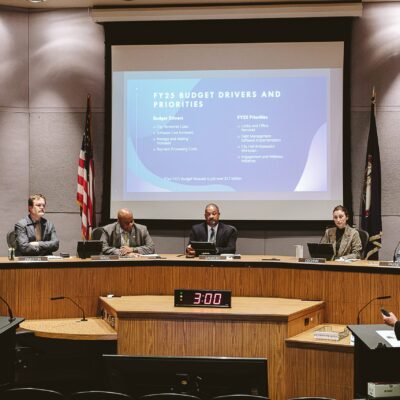It can get too easy to equate “nature” with what’s in the past. If nature can’t be modern, then our only way to reconnect with it is to turn back the clock on ourselves, too (i.e., throw out the e-book, start rubbing two sticks together). Not so fast, says Richard Louv. The guy’s clearly a fan of the great outdoors (he wrote the very widely-read book Last Child in the Woods), but he doesn’t expect anyone to adopt a Luddite stance.
|
BULLETIN BOARD Next best car: The Virginia company Edison 2 made headlines last year by winning the $5 million Progressive Insurance Automotive X Prize. The contest called for extremely fuel-efficient cars that could exceed 100 mpg. What’s next for Edison 2? Find out at a luncheon at CitySpace March 13; register at jrgbc.org. Where there’s smoke: If you’re standing in Crozet this spring and you spot smoke on the Blue Ridge, you may be seeing a prescribed burn between Jarmans Gap and Sawmill Run Overlook. Two sections totaling 508 acres will be burned over two or three days, improving habitat for yellow pine and oak communities. Mountain treasures: Conservationists Ernie Reed and David Hannah will present a video slideshow on wild areas of the George Washington and Thomas Jefferson National Forests at the March 7 Sierra Club meeting, 7pm in the Central Library’s McIntire Room. Call Tom at 831-2408 for more info. “The ultimate multitasking,” wrote Richard Louv, author of The Nature Principle, “is to live simultaneously in both the digital and the physical world, using computers to maximize our powers to process intellectual data, and natural environments to ignite all of our senses and accelerate our ability to learn and to feel…” |
Back-to-nature thinking, he explained to me in an e-mail, ignores the fact that we live in a technological and increasingly urban world. Yet we need nature more than ever, to shore up every aspect of society from property values to mental health. He’s trying (in his new book The Nature Principle, and likely in his March 15 talk at The Paramount) to lay out a vision for a thriving culture that unites nature and technology in a mutually beneficial, yin-and-yang relationship.
“The ultimate multitasking,” he wrote, “is to live simultaneously in both the digital and the physical world, using computers to maximize our powers to process intellectual data, and natural environments to ignite all of our senses and accelerate our ability to learn and to feel; in this way, we would combine the resurfaced “primitive” powers of our ancestors with the digital speed of our teenagers.”
Louv’s vision is complex, running from ecovillages to “Human/Nature Report Cards,” and I can’t do it justice here. But here’s
one glimpse. “Pediatricians and other health professionals are beginning to ‘prescribe’ nature. They’re partnering with park districts, writing ‘park prescriptions.’ Park rangers take on a new role as health paraprofessionals. That’s not looking backward, but to a future we’ve never had.”—Erika Howsare
Really out there
“Everything in the forest is awesome!” Jayda, an elementary-aged Boys & Girls club member, shouted, as she bounded ahead of her friends into the woods behind the Southwood Mobile Home neighborhood. Jayda is one of the many students at the Boys & Girls Club who looks forward to the Forest Discoveries program.
Every Wednesday, Diana Foster, a biologist and teacher who loves the outdoors, takes 20 children, ages 6-11, into the woods between their neighborhood and what’ll someday be Biscuit Run State Park. She encourages her students to get their hands dirty and learn something new.
Last fall, the children began a project to improve the trails through these woods. They made the paths more visible and accessible, picking up trash along the way. After a recent visit to the trails, the kids were delighted to see the wooden steps that UVA volunteers installed in a particularly steep section.
The group is proud of the brush pile habitats they have built throughout the woods. When instructed to build a natural shelter to help keep deer and birds warm, the elementary students eagerly headed out in search of logs, branches, and twigs to create a teepee-like structure around the base of a tree.
Olga Arouca, unit director at Southwood, commented on the benefits of the program.
“It’s amazing,” she said, watching the group work together. “So many of them struggle in school, but they come here and just do great.”
Although most of the kids did not grow up in outdoorsy households, many of them excitedly discussed bringing their families to admire their work.
The program aims to integrate science, creative writing, team-building, and sustainability—and to get kids out of their indoor comfort zones. At the end of each Forest Discoveries session, the group reconvenes to reflect on their hour in the woods. Each sitting on his or her own stump, the kids take a few minutes to write or draw about their experience on a card labeled “My Discoveries,” answering the question “What did you learn new about either the forest or yourself today?”
The children are encouraged to write or draw whatever comes to mind. One writes, “Today was awesome because we made bird habitats.” Another answers: “I learned that I am not scared of bugs.”—Laura Ingles
Bikeable business?
When we moved to Charlottesville, one of our goals was to make a livelihood in a way that is personally satisfying and in alignment with our values. Accepting that challenge was part of why we helped create Cville Foodscapes. Cville Foodscapes, now entering its third year, designs, installs, and maintains vegetable gardens for people at their home or business. Our primary mission is to help people grow their own food, but making a decent dollar per hour is also essential.
|
Kids in the Boys & Girls Club’s Forest Discoveries program get into the woods under the direction of teacher Diana Foster. (Photo by Diana Foster) |
When we started the business, our hope was to do a lot of the work by bike. Foodscapes is a very eco-focused business. Growing your own food reduces your need to drive, reduces the number of miles your food is shipped, reduces the use of petrol-based synthetic chemicals a person consumes, and likely results in making other ecologically-minded lifestyle choices. As a business, we want the way we operate to be in alignment with the service we are providing.
To start, we decided to limit how far we would travel. We generally won’t do jobs that are further than 15 miles from the center of town. When we do our free initial consultations for prospective clients, we almost always ride our bikes if they’re in town. Basic garden maintenance for clients in town is also doable by bike.
The challenge comes when a lot of tools or materials are involved. I’ve thought about strapping the tiller to our bike trailer, but it just doesn’t seem safe. And when someone wants a wooden-framed raised bed, it means trucking in lumber and a cubic yard of soil-compost mix. Even doing an in-ground garden without the tiller usually requires a significant load of compost, in addition to the various tools. The one time we did try to transport a large load of compost by bike, I almost ended up with a busted bike and compost all over the road.
Usually it’s a time/money trade off. By using cover crop, leaves from your yard or neighborhood, and a home composting system, you can have rich soil and a productive garden in a year or two without the need to truck in new soil and/or compost. Materials cost and energy usage goes down, but labor goes up. The cost to the client would be about the same, but it would take longer before they had a productive garden.
The silver lining is the world we’re working towards. We’re going to have to continue burning gas for a while—there’s no way around that. But our hope is that this business is burning gas in an effort to create a more sustainable society.—Sky Blue
/fd_bgc_111102_006_ppt_1000w.jpg)





